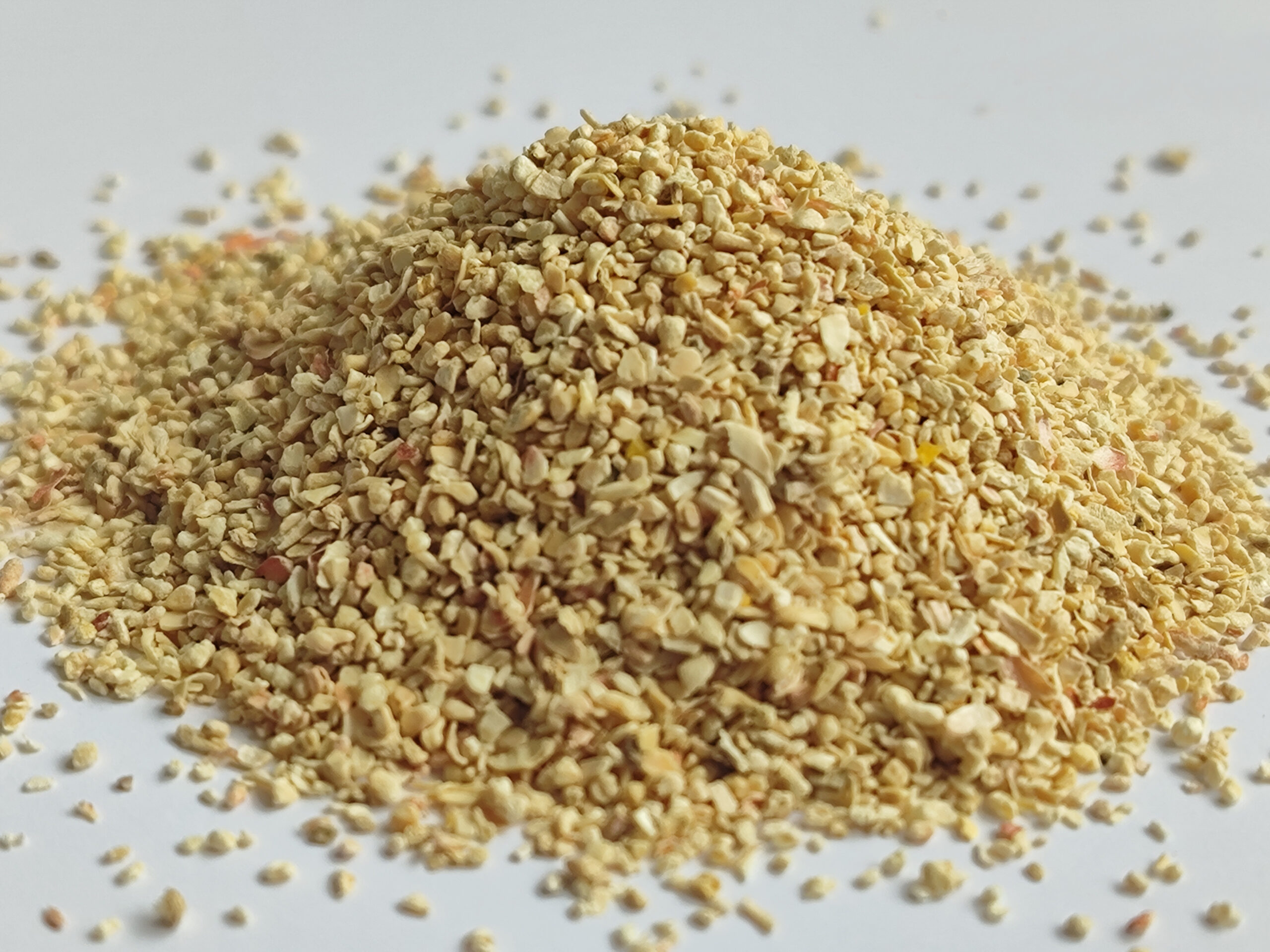The preparation process of corncob polishing abrasive mainly includes the following steps:
Raw material preparation:
Select fresh corncobs and dry them to ensure the appropriate moisture content.
Crushing and screening:
The dried corncobs are crushed and screened to a particle size of 1-8mm. This process usually uses mechanical equipment to ensure uniform particles suitable for subsequent processing.
Soaking treatment:
The screened corncobs are placed in an impregnation oil at 80-100℃ for 3-5 hours. The impregnation oil is usually a mixture of cutting fluid and grinding paste in a certain proportion to enhance the performance of the abrasive. The common weight ratio of cutting fluid to grinding paste is 2:1 or 2:6.
Drying:
After soaking, the corncobs are taken out and dried, usually by rotary drying at 50℃ to remove excess oil and moisture.
Polishing treatment:
The dried corncobs are sent to the polishing machine to remove small particles generated during the drying process to ensure the uniformity and quality of the abrasive.
Finished product inspection:
Quality inspection of the finished product to ensure that its density, particle size and polishing effect meet the standards.
The corncob polishing abrasive prepared by the above steps has good environmental protection and high-efficiency polishing performance, and is widely used in the surface treatment of metals, plastics and other materials.

Processing method of corncob abrasive
The main use of corncob is as an abrasive. The method of processing corncob abrasive is as follows:
Rough processing: The corncob with moisture controlled at 12%-18% is processed into particles with a diameter of 5-10mm through collision and grinding of equipment.
Material separation: The particles are separated from the bran by air separation, and the particles are semi-finished products.
Deep processing: The semi-finished product is squeezed into a thin sheet with a thickness of 2-2.5 mm, and then the thin sheet is broken into smaller particles and fine bran by mechanical impact, shearing and friction.
In summary, corncob, as an environmentally friendly and economical natural material, shows a wide range of application prospects in polishing, adsorption, planting and other fields. Its unique physical structure and chemical properties make it a green material that has attracted much attention.
